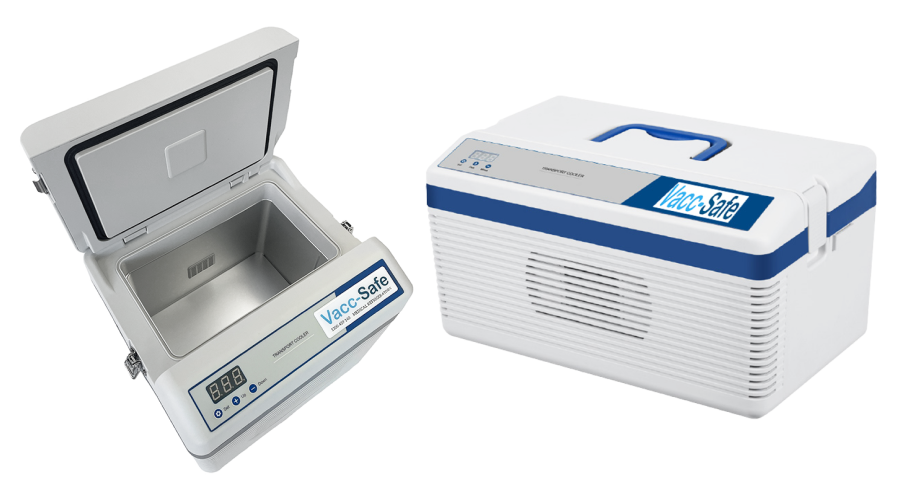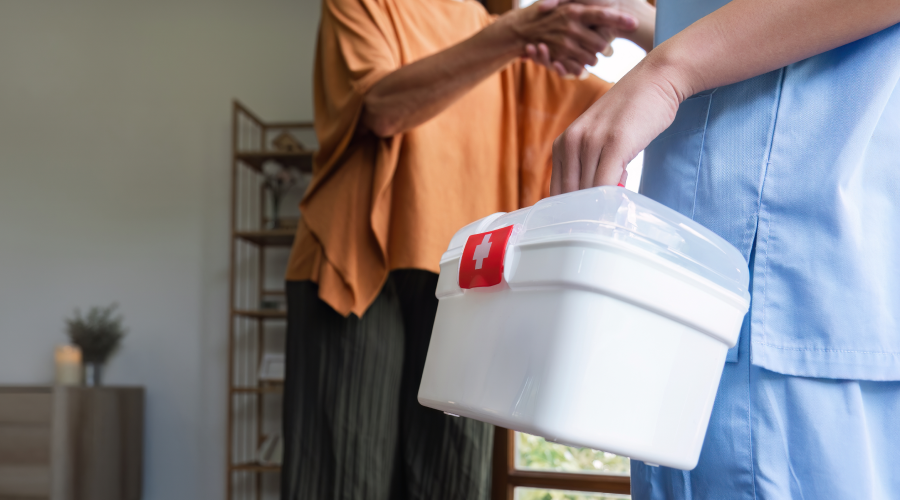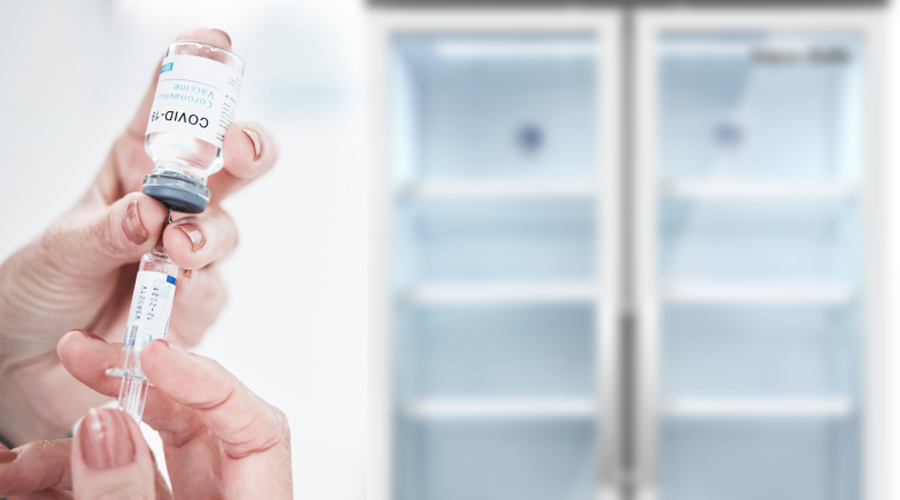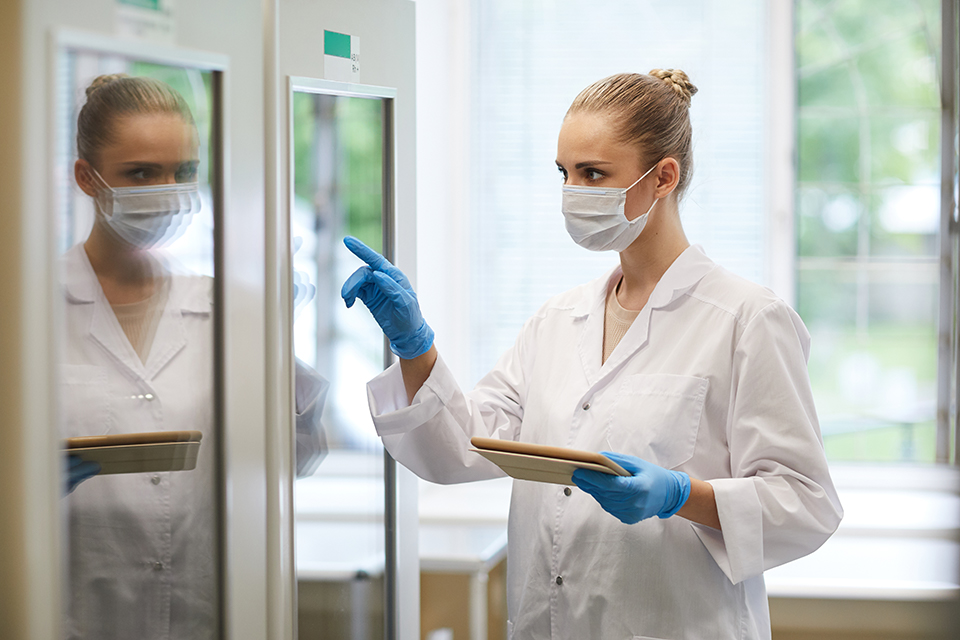Every day, global supply chains transport millions of temperature-sensitive goods, such as pharmaceuticals, foods, chemicals and artwork. Temperature-controlled transport is central to this entire process, helping to ensure their quality and safety. Also known as cold chain logistics, it incorporates a variety of equipment and technology, such as refrigerated vehicles, portable freezers and active shipping containers. Shipping temperature-sensitive goods can be a challenge. With different factors, such as contamination, theft and shipping delays, creating potential difficulties. That’s why it’s important to understand all facets of temperature-controlled transport, whether you’re a delivery driver, logistics manager or business owner.
How Does Temperature-Controlled Transport Work?
Temperature-controlled transport is the shipping of goods that require a specific temperature to be maintained. Successful transport adheres to the cold chain at every stage of the process, ensuring goods reach their destination at the desired quality. It also supports regulatory compliance and the achievement of strict quality assurance standards.
This process incorporates advanced refrigeration technologies to ensure certain temperature ranges are maintained. This can include portable refrigeration units, as well as active and passive shipping containers. Precise monitoring and alarm systems are also essential. Together, these technologies help safeguard a wide range of goods, including pharmaceuticals, vaccines, cosmetics, medical samples, and food.
However, technology is just one aspect of the process. Successful temperature-controlled transport relies on advanced logistics and attention to detail, with all workers at each step of the process responsible for achieving safe passage.
Examples of Temperature-Controlled Goods

Temperature-controlled transport is an essential element for the safety of a wide range of products:
- Medicines & Vaccines
Medicine and vaccines need to be transported at strict temperature ranges between 2°C and 8°C. Preserving these pharmaceuticals at the correct temperature is essential to prevent degradation and maintain efficacy for safe patient use. This requirement also applies to other medical products, such as blood, organs, and samples, which must be refrigerated during transport to ensure safety. - Food products
Different food products require transportation within a controlled temperature range. In particular, foods such as dairy products, fruit and vegetables, and meat must be refrigerated to prevent spoilage and ensure they remain safe for consumption. These steps are essential to keeping food fresh from its production or growth to its eventual sale at a supermarket or restaurant. - Chemicals
Certain chemicals need to be transported between sites at strict temperatures to prevent any negative reactions. For example, ethanol is a highly flammable liquid that must be kept refrigerated, as it can explode at high temperatures. This is also integral to maintaining quality and preventing degradation that may alter their chemical properties. - Electronics
Electrical components are highly sensitive to extreme temperatures. In particular, high heat can cause expansion in electronic parts, leading to circuit failure or physical warping. Temperature-controlled transport is especially critical when handling hazardous materials such as lithium-ion batteries, which can even explode under extreme heat. Because of this, transport logistics must prioritise maintaining stable temperatures to minimise waste and preserve quality. - Artwork
If exposed to extreme temperatures, different forms of artwork can quickly deteriorate. For example, the adhesive and chemical materials in paintings can warp and crack when not stored correctly. This makes temperature-controlled transport central to its handling between museums, galleries and art dealers.
Logistics for Temperature-Controlled Transport
The transport of temperature-sensitive goods became much more dependable when Frederick McKinley Jones in 1935, invented a refrigerated device that could be attached to the roofs of trailers and railcars. Since then, advancements in equipment and technology have continued to raise the reliability of temperature-controlled transport. These include the following:
- Passive shipping systems
Passive shipping is designed to insulate goods from external heat. Instead of relying on an external energy source to maintain the required temperature, it uses dry ice, specialised packaging, and thermal insulation to minimise heat transfer. This method is typically used for short-distance transport of goods such as food, as it can only maintain a consistent temperature for a limited time. - Active shipping systems
Unlike passive shipping, which relies on insulation to protect goods from heat, active shipping systems actively lower the surrounding temperature. They use an external energy source to power refrigerators and cooling units, maintaining the required conditions. This makes them ideal for transporting goods such as vaccines or pharmaceuticals over long distances, where strict and consistent temperature control is essential. - Refrigerated vehicle
These vehicles range from small vans and cars to trucks with large trailers for long-haul land transport. They are specially equipped with modern refrigeration systems that maintain the temperatures required for safe delivery. For instance, refrigerated trailers, also known as reefers, feature insulated walls and diesel-powered cooling units to regulate internal conditions. Typically, these systems are powered either by the vehicle’s battery or an external diesel engine. Unless goods need to be shipped overseas, refrigerated vehicles are generally the preferred option for facilities transporting products nationally. - Temperature-controlled air freight
Modern aircraft can accommodate the transport of temperature-sensitive goods stored in isothermal containers and insulated packaging. Because this method offers fast delivery, it can be a great option for time-sensitive goods, such as pharmaceuticals, over long distances. However, this is an expensive method, with greater costs than other methods, such as ocean freight cargo ships. - Temperature-controlled sea freight
Temperature-controlled sea freight uses technology similar to truck trailers, with refrigerated reefer containers that can maintain a stable temperature due to electronic cooling systems and insulation. Although it is a slower method when compared to air freight, it is a far cheaper alternative for long-distance transportation. It also allows for larger quantities of goods to be shipped, making it a viable option for those looking to transport bulk quantities. - Portable refrigerators
Although vehicles and freight systems transport goods from one location to another, specialised coolers are usually required to ensure products remain safe. In a medical setting, for example, the Vacc-Safe Portable Refrigerators provide active cooling to maintain pharmaceuticals within the precise temperature range of 2°C to 8°C. They are designed for transport, with sizes ranging from the VS8TC 8 Litre to the VS50TC 50 Litre, keeping products securely packaged and portable. The 8-litre refrigerator in particular is ideal for air transport, with no compressor, making it compliant with airline regulations.
Temperature-Controlled Transport Process

Although this may be different depending on your chosen industry, the transport process will typically involve the following steps:
- Product Preparation
Your goods are prepared and packaged to be ready for shipment. Depending upon your goods, they may be packaged within vacuum-insulated bags, thermal containers or portable coolers. Typically, they are also prepared with additional gel and ice packs to ensure internal temperatures are maintained. Also involves coordinating their transportation, with planning and scheduling the entire process. - Loading onto transport
Your goods are loaded safely and efficiently into their transport system. Also, the step of the process where refrigeration systems and transportation vehicles are double-checked for any faults. - Transportation
The stage where your goods move from one location to another, through the use of specially designed transport such as refrigerated trucks or temperature-controlled cargo ships. - Unloading and Delivery
Once your transportation arrives at its destination, it will need to be unloaded safely and transferred into the facility’s storage. Ensure you work with the new owner of the goods to confirm they have the necessary refrigeration or temperature-controlled storage to keep the products safe.
Why is Temperature-Controlled Transport Important?
Cold chain logistics is vital to a variety of different industries for the following key reasons:
- Maintains product quality and safety
First and foremost, keeping your goods transported at a safe temperature ensures they maintain their efficacy and safe use. Even slight increases or decreases in temperature can be catastrophic, making temperature-controlled transport that maintains strict temperature levels vital. - Ensures regulatory compliance
Depending upon your industry, adhering to the cold chain protocols during transport helps to ensure compliance with the strict rules and regulations that govern their safety. For example, the transport and proper storage of vaccines are regulated by the Australian Health Practitioner Regulation Agency (AHPRA) and guided by the National Vaccine Storage Guidelines. The Guidelines explicitly state that “Vaccines must always be stored and transported within the recommended temperature range of 2°C to 8°C,” making temperature-controlled transport vital. - Critical for patient safety in hospital settings
Within medical facilities and hospitals, temperature-controlled transports ensure the pharmaceuticals and vaccinations are safe for patient use. Improper transport can cause temperature-sensitive pharmaceuticals to lose their potency, putting vulnerable patients at risk of not receiving the correct treatment. - Reduces waste
When a cold chain breach occurs during transport, your goods may be compromised to the point that they have to be discarded. This makes temperature-controlled transport vital, particularly when transporting large quantities of goods or costly products such as electronics or medical pharmaceuticals.
What are the Challenges of Temperature-Controlled Transport?

Cold chain logistics doesn’t come without its own set of challenges. Particularly when handling temperature-sensitive goods, one mistake and the entire shipment may be put at risk. Understanding the following can put you in the best position to handle any challenge effectively:
- Extreme weather
Unpredictable weather conditions can be disruptive to normal transport operations. For instance, shipping temperature-sensitive products that require refrigeration through extreme heat can put additional strain on transportation equipment, increasing the risk of mechanical failure or overheating. This risk is especially high during loading, if goods are left between transport for extended periods in extreme weather. Furthermore, extreme weather events, such as snow or floods, can increase the risk of accidents on the road. - Contamination
Because of the multiple transport stages within cold chain logistics, contamination poses a significant challenge. This can occur due to human error in handling or unsanitary transportation equipment. It can also be caused by cross-contamination when incompatible goods come into contact with each other. - Theft or damage
As with any form of transport logistics, theft and damage are common risks. These can occur due to inadequate security infrastructure or accidents during transport. High-value goods, such as pharmaceuticals or electronics, are particularly vulnerable and may attract potential thieves. - Shipping delays
Shipping delays that extend the transport process may increase the risk of goods degrading or becoming spoiled. For example, perishable products such as pharmaceuticals and food have a limited shelf life, and even with proper storage, extended transport delays can further reduce their availability upon delivery. - Power outage
A power outage can be devastating for the safe transport of temperature-sensitive goods. This can result in severe temperature fluctuations that ruin the quality of products like medical pharmaceuticals and food. These can occur without warning, often due to extreme weather, such as heat, putting extra stress on your systems. Investing in a backup generator or uninterruptible power supply (UPS) can keep your sensitive goods safe during any outages.
How to Ensure Safe Transportation of Temperature-Controlled Goods

To assist you with overcoming the prior challenges, we recommend considering the following steps to ensure safe transport:
- Regular vehicle and equipment checks and maintenance
Cleaning and maintenance checks must be conducted on a regular basis to reduce the risk of any potential mechanical or electrical failures. Make sure to contact a professional to assess the condition and performance of your refrigeration units and vehicle. Drivers and operators should also be responsible for conducting thorough checks on their vehicles and refrigeration equipment before every shift. - Train drivers and staff on best practices
Because of the stringent regulations that govern temperature-controlled transport, all participants within the entire transport process must be properly trained. Helps to ensure mistakes such as contamination or incorrect packaging are avoided. - Use appropriate packaging
Ensure your goods are transported in packaging that’s suitable for their specific type. For example, pharmaceuticals must be stored between strict temperatures of 2°C and 8°C, necessitating the use of specialty-made portable refrigerators that are appropriate for travel. - Ensure the use of remote temperature monitoring devices
Vital to incorporate temperature monitor devices, such as sensors or data loggers, within your transport. These devices can provide real-time information on temperature, allowing you to take immediate action when any deviations occur before they ruin your goods’ efficacy. For example, clever loggers are devices that wirelessly save your refrigerator’s internal temperatures to the internet every few minutes. This data is also important when adhering to regulations, ensuring you can prove to regulators that temperatures have been accurately maintained.
Temperature-sensitive transport is vital to the safekeeping of sensitive goods. Pharmaceuticals, vaccines, food, and electronics must be safely transported before they can serve our everyday needs. Our article has unpacked everything you need to know about this form of transportation. For more information, please contact the experts at Vacc-Safe for assistance and review their range of portable refrigerators.



